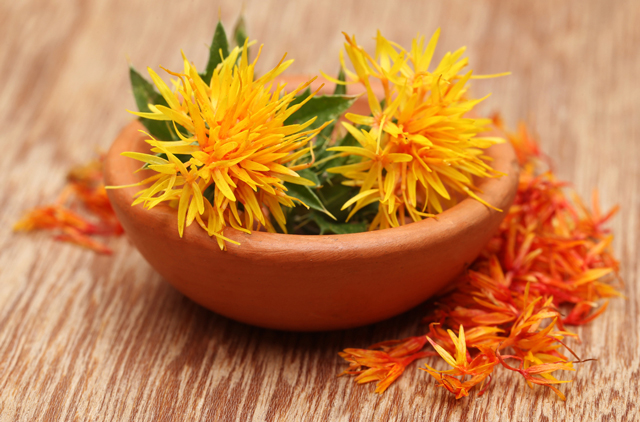The pharmacology and phytochemistry of Carthamus tinctorius L. (safflower)
07/09/2019 // Janine Acero // Views
Tags: alkaloids, alternative medicine, Carthamus tinctorius, clean food, disease treatments, flavonoids, folk medicine, food cures, food is medicine, functional food, goodfood, goodhealth, goodmedicine, goodscience, heart health, herbal medicine, Herbs, natural cures, natural medicine, pharmacology, phytochemistry, plant components, Plants, remedies, research, safflower, science, superfoods, TCM, traditional Chinese medicine, traditional medicine

- Safflower is a multifunctional cash crop.
- Its flowers and seeds are used extensively in folk medicine in China, Japan, Korea, and other Asian countries.
- Safflower is used for treating numerous diseases, such as gynecological, cardiovascular, and cerebrovascular diseases, as well as blood stasis and osteoporosis.
- Over the years, researchers have isolated and identified more than 100 compounds from C. tinctorius.
- Numerous studies have reported that flavonoids and alkaloids, especially the quinochalcone c-glycoside hydroxysafflor yellow A, N-(p-Coumaroyl) serotonin, and N-feruloylserotonin, are responsible for most of the pharmacological activities of C. tinctorius.
The researchers believe that their review will be helpful to others who wish to further explore the therapeutic potential of C. tinctorius and may provide future research opportunities.
Visit Herbs.news for more studies on the therapeutic potential of plants like safflower.
Journal Reference:
Zhang LL, Tian K, Tang ZH, Chen XJ, Bian ZX, Wang YT, Lu JJ. PHYTOCHEMISTRY AND PHARMACOLOGY OF CARTHAMUS TINCTORIUS L. The American Journal of Chinese Medicine. 2016;44(02):197–226. DOI: 10.1142/s0192415x16500130
Related Topics
alkaloids alternative medicine Carthamus tinctorius clean food disease treatments flavonoids folk medicine food cures food is medicine functional food goodfood goodhealth goodmedicine goodscience heart health herbal medicine Herbs natural cures natural medicine pharmacology phytochemistry plant components Plants remedies research safflower science superfoods TCM traditional Chinese medicine traditional medicineLatest News
Related News
11/21/2023 / By Arsenio Toledo
11/21/2023 / By Evangelyn Rodriguez
11/21/2023 / By Zoey Sky
11/20/2023 / By Arsenio Toledo
11/17/2023 / By Zoey Sky
11/15/2023 / By Kevin Hughes
Take Action:
Support Natural News by linking to this article from your website.
Permalink to this article:
Copy
Embed article link:
Copy
Reprinting this article:
Non-commercial use is permitted with credit to NaturalNews.com (including a clickable link).
Please contact us for more information.
Please contact us for more information.






















